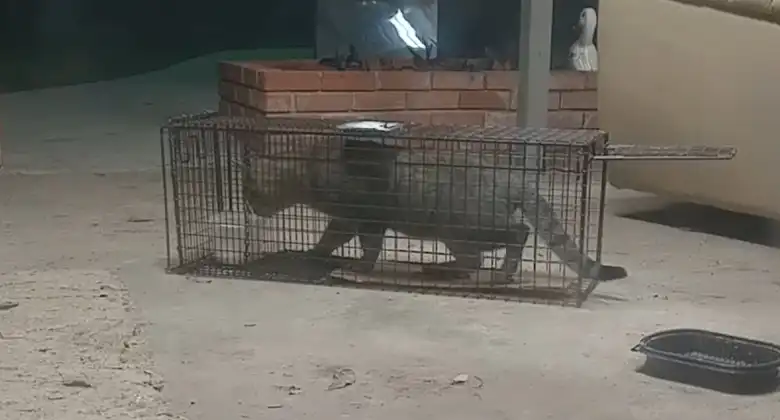Trapping stray and feral cats is a common technique used by rescue groups to capture cats for neutering, vaccinating, and adoption. But these cats are unaccustomed to confinement – so how long is it safe to keep cats confined in traps?
The short answer is 24 hours maximum, though less time is ideal. Traps cause stress and make provisions like food, water, and waste cleanup challenging. While traps are indispensable capture tools, cats cannot stay in standard cat traps indefinitely.
This article covers the risks of prolonged trap confinement, signs of trap distress, proper trap setup to maximize cat health, and appropriate trap holding times. If you plan to undertake any trapping efforts, understand best practices to minimize negative impacts on cat health and temperament. Cats deserve low-stress handling, even when temporarily caught in traps!

Appropriate Trap Holding Times
As a general rule:
- Less than 2 hours is ideal and causes the least distress. Promptly transport cats for care.
- Up to 8 hours may be tolerated for surgery/vet runs if proper trap setup is ensured.
- Up to 12 hours overnight in emergencies, provided food, water, ventilation, shelter, and veterinary oversight.
- Up to 24 hours maximum ONLY with ongoing veterinary monitoring and approval. Avoid this whenever possible.
The urgency of the cat’s needs must be balanced with trapping impacts. Seek veterinary guidance to determine holding time on a case-by-case basis.
Dangers of Extended Trap Confinement
Traps are meant for short-term cat holding, not prolonged containment. Risks of leaving cats in traps too long include:
- Dehydration and malnutrition without access to food and water.
- Exposure if trapped in extreme temperatures without climate control.
- Injuries attempting to escape small enclosures.
- Elimination issues since traps lack litterboxes.
- Anxiety, stress, and behavioral issues from confinement.
- Deteriorating respiratory health from lack of ventilation.
- Declining mental health from isolation and sensory deprivation.
Trapping is already an inherently stressful process for homeless cats. Extending confinement multiplies that stress and jeopardizes cat health. Use best practices to minimize risks.
Signs of Trap Distress
Watch for these indicators that a cat is suffering from excessive trap confinement:
- Panting, vomiting, or vocalizing
- Trash-raking behaviors
- Pacing, shaking, or agitation
- Aggression when the trap is approached
- Expressions of fear like flattened ears
- Apparent injuries to face/paws from attempting escape
- Evidence of urination or defecation due to lack of sanitary options
These behaviors signal traps are causing more harm than good. Seek prompt veterinary guidance whenever these concerning signs appear.
Proper Trap Setup to Maximize Health
If holding cats in traps is necessary, optimize welfare by:
- Placing traps indoors or in a temperature-controlled area.
- Using larger dog traps for medium/large cats to allow movement.
- Lining the bottom of the trap with puppy pads for sanitary waste removal.
- Providing food and limiting time without water to less than 8-12 hours.
- Transporting cats in covered traps to reduce environmental stressors.
- Scheduling vet checkups promptly upon trap confinement when possible.
- Administering calming supplements like L-theanine and minimizing noise.
Even well-designed traps remain highly stressful for cats. Strive to minimize suffering until cats can be transferred to proper housing.
Cat Trap Regulations
Understanding local laws and ordinances regarding cat trapping is crucial to avoid legal consequences and ensure humane treatment. Laws and regulations regarding trapping vary from one area to another, and it’s essential to be well-informed about the specific rules in your locality.
Organizations like [Local Animal Control] can provide guidance and information on trapping regulations in your area. It’s also advisable to seek permission or advice from local authorities if you’re planning to trap cats, especially in urban or densely populated areas.
Conclusion
Well-orchestrated trapping operations are a lifeline for community cats needing care. But confinement stress is real. Limit trap time to the absolute minimum workable duration. Invest in properly sized and enriched traps. Schedule veterinary treatment ASAP after trapping. And provide food, water, climate control, and sanitation whenever possible. With thoughtful preparation and speedy execution, trapping can improve life for stray cats while minimizing confinement trauma.
FAQs
- How Long Can I Keep A Feral Cat In A Trap?
No more than 24 hours. Less than 8-12 hours is ideal. Seek veterinary guidance to determine safe confinement duration case by case.
- What Are Signs A Trapped Cat Is In Distress?
Panting, vomiting, pacing, elimination issues, lack of appetite, lethargy, aggression, and other stress signs require prompt veterinary evaluation.
- Should Trapped Cats Have Access To Food And Water?
Yes. Provide food immediately and water within 12 hours maximum, less if possible. Monitor intake.
- What Size Trap Should Be Used To Hold Cats?
Use the largest trap possible for each cat to allow standing, turning around, litter box access, etc.
- How Can I Reduce Stress For Cats While Trapped?
Use calming pheromones, enrichment toys, hide bedding, climate control traps indoors, limit noise/activity, transport covered, and schedule veterinary care urgently.
